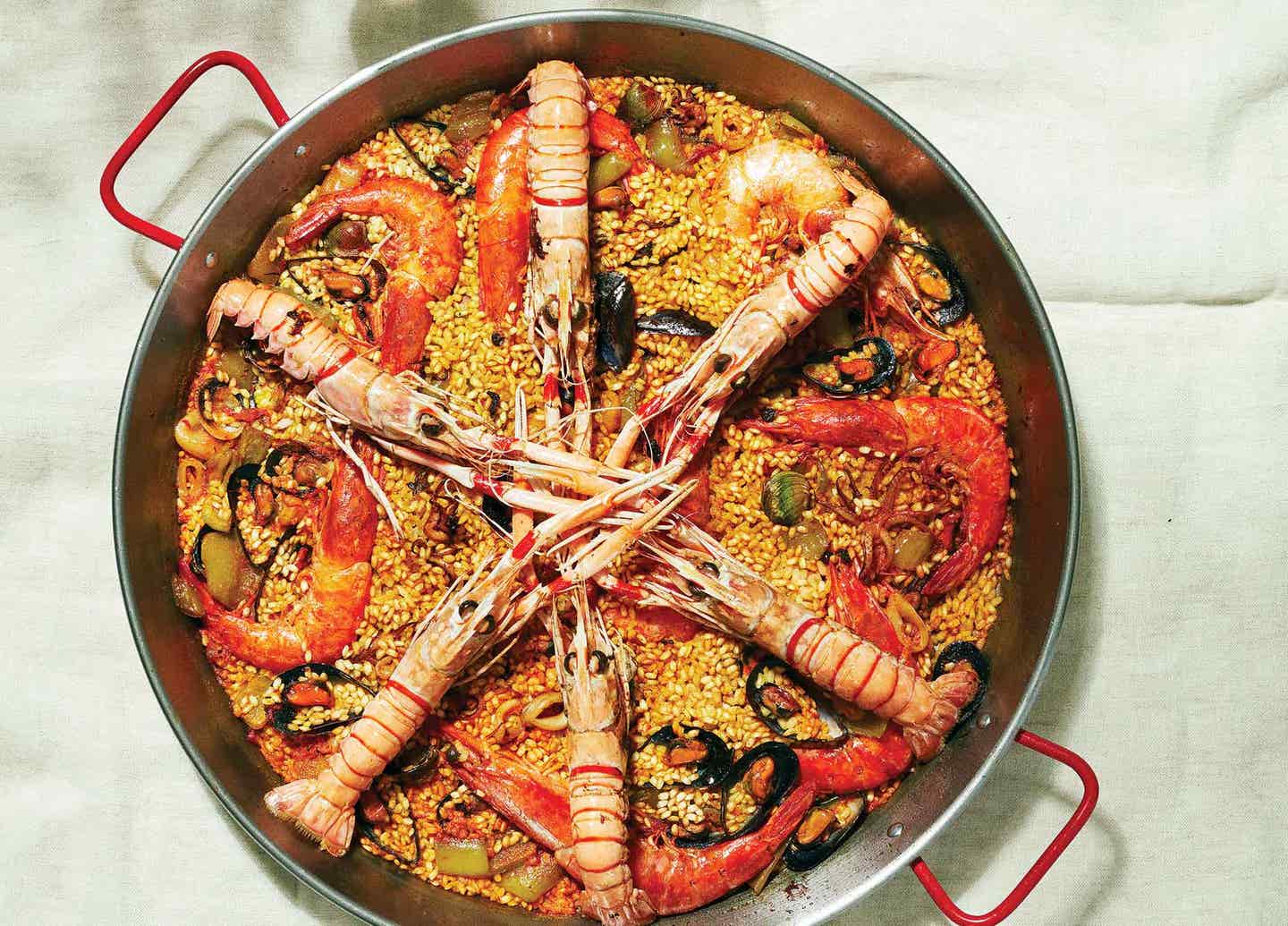
9 Ways to Make the Best Paella Ever
Your complete guide to mastering the Spanish essential and scoring perfect soccarat
Paella comes from the countryside around Valencia, where it began as a humble dish for workers in the orchards and vegetable fields. They simmered what ingredients they could find—tomatoes, beans, rabbit, snails—in a wide pan over the cuttings of orange trees before adding rice to absorb the flavors and make a filling midday meal. From there, paella drifted into villages and then cities and eventually became Spain’s national dish.
Along the way, it became a tourist-trap staple. It’s an unfortunate truth: Few restaurants serve decent paella, even in Spain. Industrially produced frozen versions, tricks like doctoring parboiled rice with coloring additives in place of saffron, and nontraditional ingredients like lobster and chorizo are a common, dispiriting sight.
Paella is at its best cooked at home, made with traditional, shortcut-free technique and served the moment it’s ready to an appreciative crowd. It’s something I learned 20 years ago when I moved to Spain and married into a family with roots in Valencia for whom making paella has been a weekend ritual for more than 40 years. Nothing in Spanish cooking compares to carrying a massive pan of golden-brown rice out to the table, or the pleasures of digging into one. And while paella has a lot of details to sweat and rules to follow, the most important is simple: There is no such thing as a version for just one person. As one aunt in the family village in rural Valencia says, “Paella is really just an excuse to gather people.”
1) Pick the Right Rice
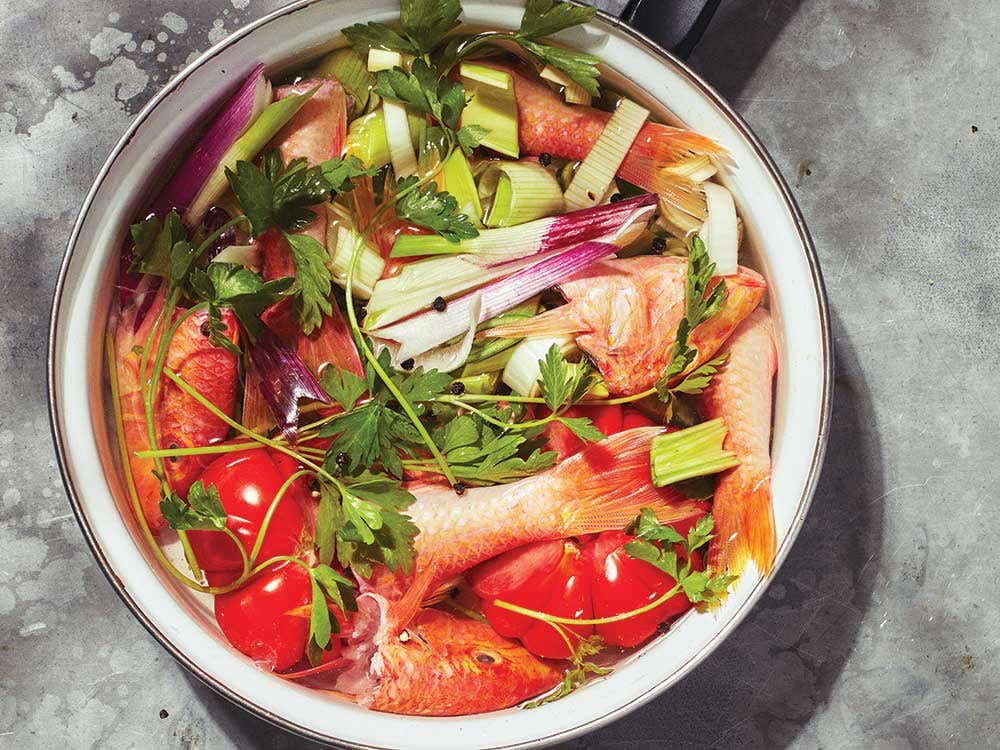
Paella is a rice dish. Not a dish of rabbit or seafood along with some rice. Rice is the foundation, and everything is done to flavor the grains. Short- or medium-grain rice soaks up the most liquid and flavor. The best options are varieties from Valencia’s rice fields like bahía, senia, and bomba. Bomba is the most forgiving of the three and the least likely to split open and lose its texture if the timing isn’t perfect. In a pinch, substitute Italian carnaroli, arborio, Calrose, or Japanese short-grain rice. Just avoid long-grain rices, which do a poor job of absorbing as much of the stock—and all the flavor that comes with it.
2) Get Extra Crispy
An ideal paella has a thin layer of toasted, slightly caramelized rice on the bottom of the pan—the socarrat. Some cooks chase it by boosting the heat for the final minute or two of cooking, but beware: This greatly increases the risk of scorching. Even heat and proper timing are much safer. Practice makes perfect.
3) Stick to True Ingredients
The question of what has a right to go in the pan can inspire garment-rending passion among paella partisans. Purists will argue there is only one true paella, the classic from Valencia that generally includes rabbit, chicken, two or three types of fresh, local beans, and snails or a sprig of rosemary. (Yes, it’s snails or rosemary: Valencian snails cling to this herb and bring some of its essence to the rice on their own.) But there are many combinations recognized by all but the most extreme traditionalists, from paellas that celebrate the arrival of spring produce, like rabbit and artichoke, to my mother-in-law’s specialty, shellfish. Olive oil and tomatoes are obligatory, as are saffron and sweet Spanish paprika, which give the dish its aroma and color. One thing to leave out: chorizo. It’s just not done. Along with being a slap in the face to tradition, it can overwhelm the other flavors.
Go the extra mile to use bone-in meats and whole shrimp and prawns. Remember how all the other ingredients are mostly there to flavor the rice? Bones, shells, and heads mean deeper flavors in the stock that the rice cooks in.
4) Don’t Say ‘Paella Pan’
The traditional wide, shallow pan gives the dish its name—paella means “pan” in Valencian and Catalan—and it allows the rice to cook evenly without being stirred, which aids the formation of a crispy socarrat. A generously sized pan also doubles as a communal plate.
Size
To ensure even cooking, the rice needs to remain in a thin, consistent layer. The bigger the crowd, the wider your pan should be. The ideal size for four is 17 to 18 inches; for six it’s 18 or 19.
Material
Use pans made of a thin, conductive metal that will cool rapidly when removed from the heat so the rice won’t overcook. In Spain, the typical pan is made from carbon steel. They’re inexpensive but need special care and seasoning. If that sounds like a pain, enameled steel pans are a good compromise: They are more expensive but easier to maintain. Avoid heavy pans like cast iron, which don’t cool quickly enough, and anything nonstick, since a little sticking helps develop a crispy socarrat.
5) But Do Season It
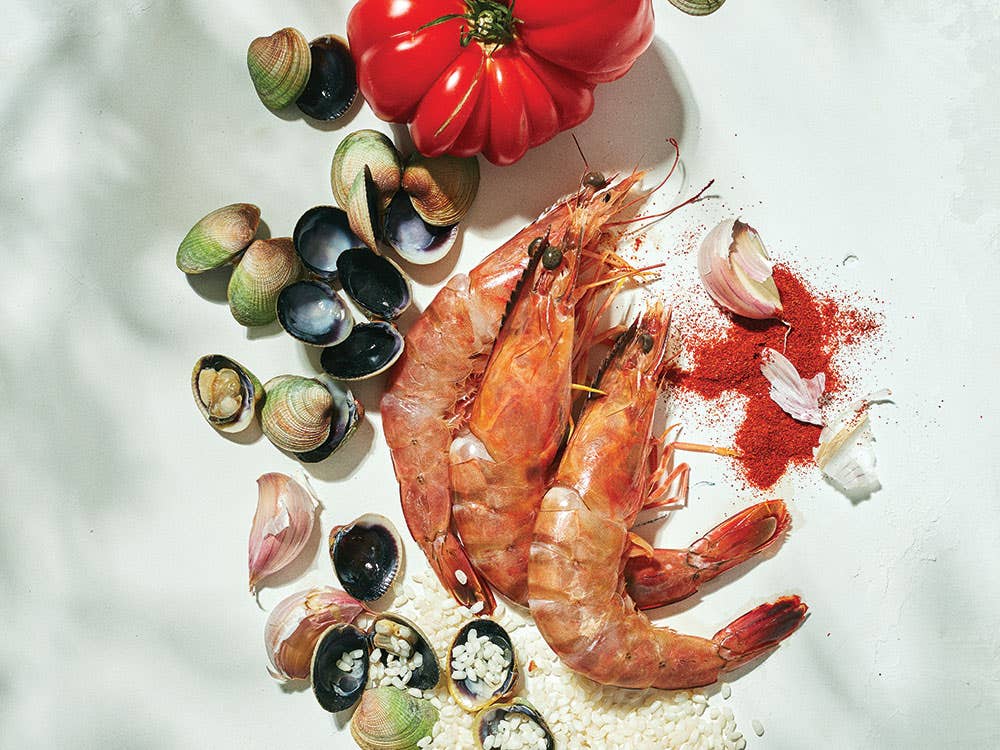
To season a new carbon-steel pan, simmer an equal mixture of water and vinegar in the pan for 5 or 10 minutes, then wash thoroughly with soap and water. Next, boil a few handfuls of rice in plenty of water in the pan for another 5 or 10 minutes. Discard the rice, wash the pan again, and it’s ready for use.
6) Mind Your Heat Source
Paella is a dry rice, which means that the liquid must be completely absorbed at the precise moment the rice is done. Missing the mark can lead to undercooked grains or a mushy paella. Finding a wide, stable, and powerful source of heat that will evenly reach the entire pan is key to success. Outside, that means cooking in a fire pit over open flames or, less traditionally but no less effectively, on a grill. Inside, try straddling two or three stovetop burners and frequently rotating the pan.
7) Serve it Right
As my mother-in-law always says, “People can wait for rice, but rice can’t wait for people.” Wait until all of your guests arrive before adding the rice. And don't stir. This is not risotto. Stirring means a creamy rather than dry texture, and you also won’t get any socarrat.
Before serving, let the paella rest for 5 minutes to allow the flavors to blend and the starches in the rice to firm up so the grains will hold their shape. If the top layer of rice needs to cook more, cover the pan with paper towels or a clean kitchen cloth while it rests. And don’t plate in the kitchen. Let your guests admire the finished dish at the table. The best way to honor the rustic roots of the dish is to have them eat directly from the pan with spoons.
8) Pick Up These Tools
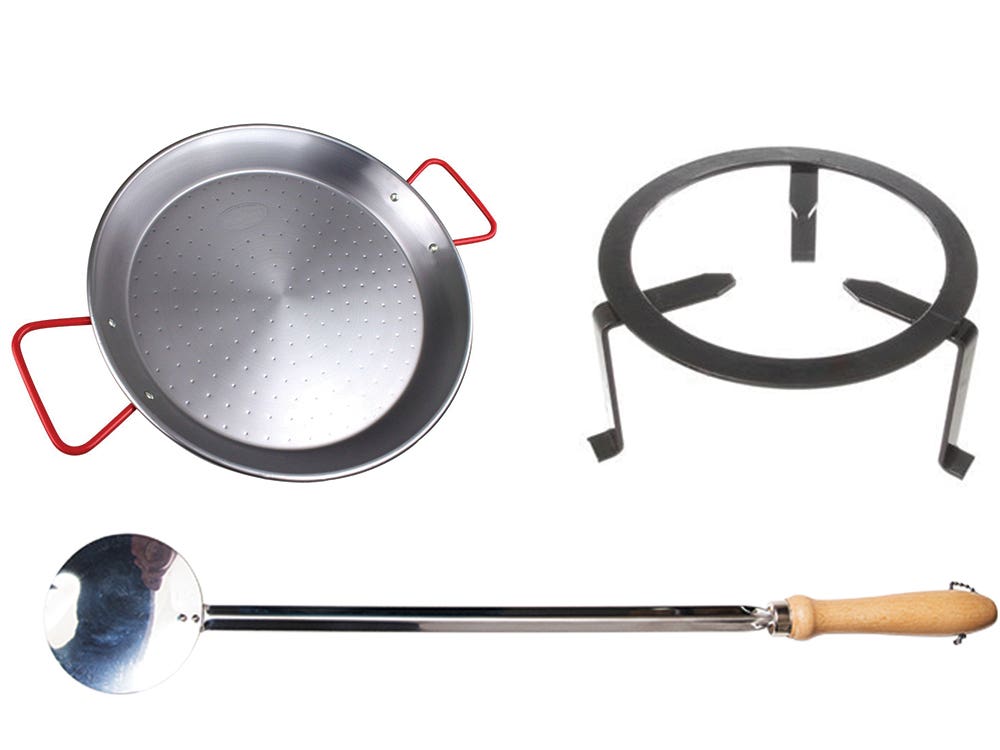
Wide, shallow, and ideally made of carbon steel, a paella pan is necessary to cook the rice evenly. Use a long, flat spoon to mix things up before the rice is added. When cooking over an open fire, place the pan over a low, iron stand to keep it close to the flame.
9) And Read Up
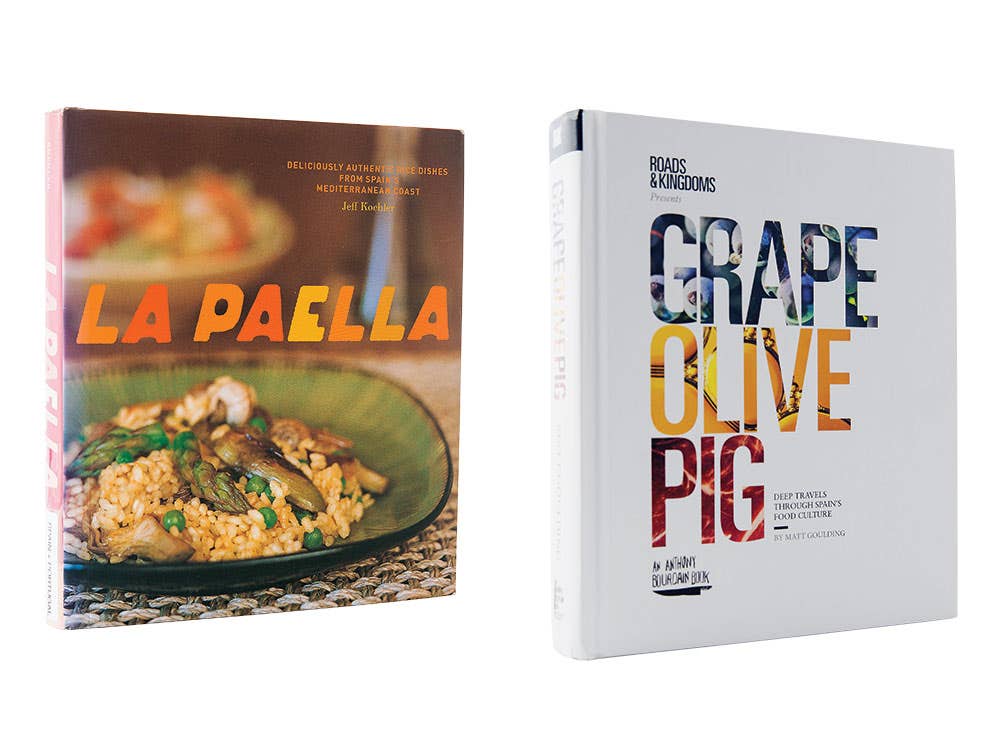
Grape, Olive, Pig: Deep Travels Through Spain's Food (Right) Amazon
La Paella by Jeff Koehler "The liquid must be completely absorbed at the precise moment that the rice is al punto [at the point]," I wrote in my book La Paella. "And here lies the challenge, in a shifting equation of pan, heat source, and liquid."
Grape, Olive, Pig: Deep Travels Through Spain’s Food by Matt Goulding “If you look closely enough, you will find the entire history of Spain within the perimeter of a paella pan,” opens Matt Goulding’s chapter on Valencia in Grape, Olive, Pig, a deep dive into the dish synonymous with the region and the fight for authentic paella.
10) Paella Recipes

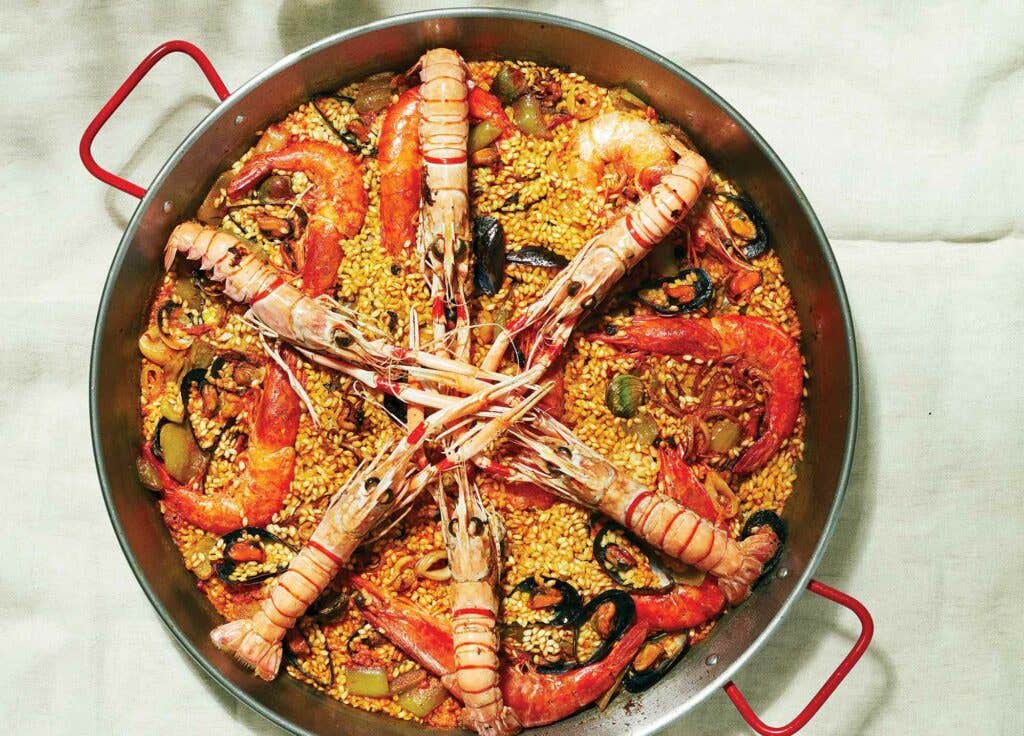
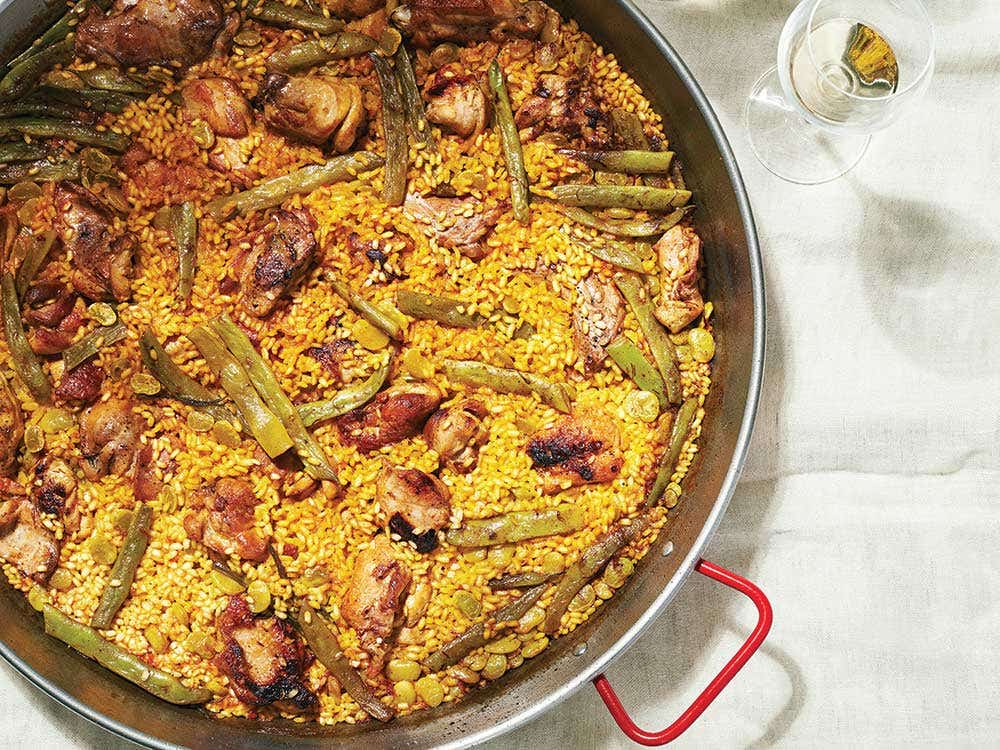
Keep Reading
Continue to Next Story










